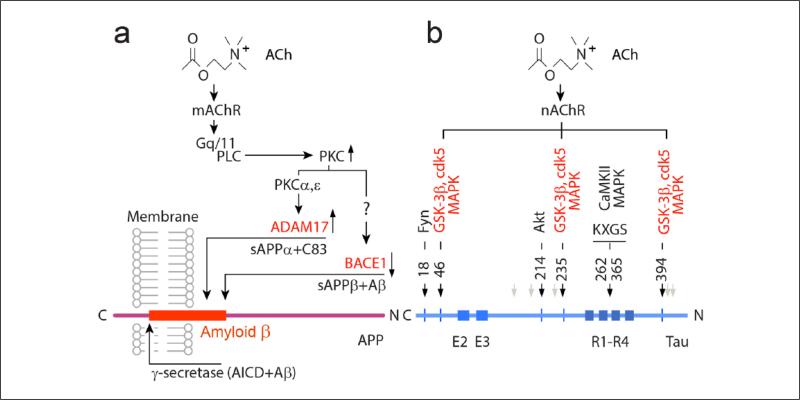Figure 2.
Biochemical pathways linking muscarinic ACh receptor (mAChR) or nicotinic ACh receptor (nAChR) with amyloid precursor protein (APP) cleavage and phosphorylation of microtubule-associated protein (MAP) tau. (a) On binding to ACh, mAChR stimulates Gq/11 protein, which activates phospholipase C (PLC) and downstream protein kinase C (PKC). These lead to stimulation of ADAM17 and inhibition of BACE1, promoting the non-amyloidogenic cleavage of APP, with shedding of sAPPα. (b) Stimulation of nAChR activates an array of reactions directed to the phosphorylation of MAP tau. Schematic (bottom) illustrates the structure of MAP tau: R1-R4—four repeat sequences, which make up the microtubule-binding domain of tau. On activation, nAChR promote the phosphorylation of tau via stimulation of glycogen synthase kinase 3 (GSK-3β), cyclin-dependent kinase (cdk5) and mitogen-activated protein kinase (MAPK) and potentially other kinases. Black arrows point onto sites of hyperphosphorylation characteristic of Alzheimer's disease. Light brown arrows point to more recently suggested phosphorylation sites (Thr181; Ser202; Thr231; Ser396; Ser404 residues) by nAChR, also relevant to the neurofibrillary pathology in Alzheimer's disease.

